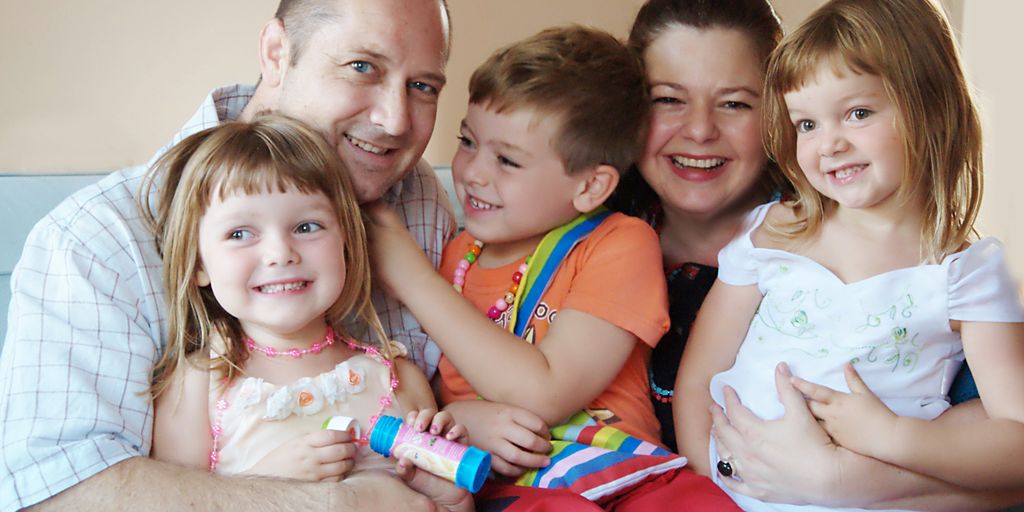
Welcome to ‘The Ultimate Guide to Family Wellness: Tips and Strategies for a Healthier Home.’ Balancing the fast pace of modern living with wellness can be challenging, but it’s achievable with the right approach. This guide is your ally in weaving health and happiness into the fabric of your family life. From creating a healthy home environment to nurturing emotional well-being, promoting physical health, balancing digital life, fostering mental health, and embracing sustainable living, this comprehensive resource offers practical tips and expert advice to help you foster a happier, healthier home.
Key Takeaways
- Creating a healthy home environment is essential for overall well-being.
- Nurturing emotional well-being strengthens family bonds and promotes happiness.
- Regular physical activity and balanced nutrition are crucial for all age groups.
- Managing digital life and setting screen time limits can improve family interactions.
- Embracing sustainable living practices benefits both your family and the environment.
Creating a Healthy Home Environment
Creating a healthier home environment is essential for enhancing your family’s overall well-being. By focusing on key areas such as indoor air quality, sustainable practices, and reducing household toxins, you can transform your living space into a sanctuary of health and wellness.
Nurturing Emotional Well-Being
Building Strong Family Bonds
Creating a nurturing environment starts with building strong family bonds. Safe, stable, nurturing relationships in the family lay the foundation for trust and security. Plan time for play and use positive parenting techniques to strengthen these bonds.
Practicing Mindfulness Together
Mindfulness practices can help families develop greater self-awareness and emotional regulation. By fostering present-moment awareness, families can cultivate a sense of inner calm and resilience. Incorporating mindfulness into daily routines can lead to reduced stress and improved mental well-being.
Encouraging Open Communication
Encouraging open communication within the family is crucial for emotional well-being. Offer your full attention during conversations and practice empathy and compassion. This fosters a sense of security and belonging within the family unit.
By prioritizing mental and emotional support, families can build a resilient foundation that supports each member’s mental health journey, promoting a life of emotional well-being and strong, supportive relationships.
Promoting Physical Health
Engaging in physical activities as a family not only promotes health but also strengthens bonds. Consider activities like brisk walking, biking, kayaking, hiking, swimming, baseball, softball, martial arts, soccer, basketball, dancing, and yoga. Regular physical activity is a vital component of preventative health care and can significantly contribute to a healthier, more fulfilling life.
By prioritizing nutrition and healthy eating, families can support their overall health, reduce the risk of chronic diseases, and enhance their quality of life. Incorporating a variety of nutritious foods into daily meals ensures that everyone gets the essential nutrients they need.
A good night’s sleep is crucial for physical health. Establishing consistent sleep routines helps improve overall well-being and energy levels. Encourage everyone in the family to stick to a regular sleep schedule and create a calming bedtime environment.
Both kids and parents need physical activity to stay healthy — and the Move Your Way® campaign has lots of tips to help families move together.
Balancing Digital Life
In today’s fast-paced world, maintaining a balanced digital life is essential for a healthy family dynamic. Setting boundaries around screen time ensures that technology enhances rather than detracts from family life.
Setting Screen Time Limits
Establishing personal goals for reducing screen time and tracking progress regularly can help stay motivated towards achieving a healthier balance. Encourage respectful communication and demonstrate digital empathy by considering others’ feelings and experiences online.
Encouraging Offline Activities
Reflect on your digital habits and consider the impact of media consumption on your daily life. Challenge yourself to replace device time with activities that nourish your spirit, such as reading a book, engaging in conversation, or exploring the great outdoors. This can lead to a more balanced, less stressful existence.
Creating Tech-Free Zones
Designate certain areas of your home as tech-free zones, like the dining room or bedrooms. This encourages more face-to-face interactions and helps create a more harmonious living environment.
Balancing the fast pace of modern living with wellness can be challenging, but it’s achievable with the right approach. Embrace these principles and make your home a place where health thrives, allowing you to enjoy a more balanced and fulfilling lifestyle.
Fostering Mental Health

Identifying stress indicators in family members is essential for early intervention. Watch for behavioral changes, mood swings, or physical symptoms like headaches and fatigue. Early detection can help prevent more severe mental health issues from arising.
Offering emotional support within the family is key to creating a safe and nurturing environment. This involves practicing empathy and compassion, which strengthens emotional bonds and fosters a sense of security. Incorporating stress-reducing activities such as mindfulness, meditation, or yoga can benefit the entire family’s mental health.
By prioritizing mental and emotional support, families can build a resilient foundation that supports each member’s mental health journey, promoting a life of emotional well-being and strong, supportive relationships.
Sometimes, professional help is necessary to address mental health concerns. Do not hesitate to seek the assistance of a mental health professional if needed. This can provide valuable support and guidance for the entire family.
Embracing Sustainable Living
Making eco-friendly improvements to your home can significantly reduce your environmental footprint. Start with small changes like using reusable bags, reducing water waste, and choosing energy-efficient appliances. These steps not only benefit the environment but also promote a sense of responsibility and mindfulness within the family.
Sustainable living starts with well-defined, attainable goals. These objectives could range from minimizing household waste to embracing energy-efficient practices.
To reduce waste, adopt a zero-waste mindset by refusing unnecessary items, reducing consumption, reusing products, recycling correctly, and composting organic waste. This approach helps minimize the family’s environmental footprint and encourages sustainable living practices.
Concentrate on eating whole, unadulterated foods as close to their natural condition as possible. Opt for fresh fruits, vegetables, entire grains, and lean proteins. Choosing sustainable food options not only supports your health but also benefits the planet. Educate your children about the importance of these choices through books, documentaries, and hands-on activities.
Cultivating Lifelong Wellness Habits
Regular physical activity is essential for maintaining overall health and well-being. Incorporating daily exercise into your routine can help reduce the risk of chronic diseases and improve mental health. Consider activities that the whole family can enjoy, such as walking, biking, or playing sports together.
Self-care is crucial for managing stress and maintaining emotional balance. Encourage each family member to take time for themselves, whether it’s through hobbies, relaxation techniques, or simply taking a break. Prioritizing self-care can lead to a more harmonious and supportive home environment.
Engaging in educational activities as a family can foster a love for learning and strengthen family bonds. This can include reading books together, exploring new hobbies, or even taking classes as a family. By nurturing healthy habits in children, you set the foundation for lifelong wellness.
Healthy habits start early in life. Encouraging and supporting very young children to enjoy active play and choose nutritious foods can set a lifelong pattern for well-being.
Conclusion
In conclusion, "The Ultimate Guide to Family Wellness: Tips and Strategies for a Healthier Home" serves as an invaluable resource for anyone looking to enhance the well-being of their family. Packed with actionable insights and inspirational stories, this guide provides practical tips and strategies to create a vibrant and flourishing family life. Whether you’re a seasoned wellness enthusiast or just beginning your journey, the information within these pages will help you nurture your loved ones and foster a happier, healthier home. Remember, the key to family wellness is taking it one step at a time and making sustainable changes that can be integrated into your daily routine. Here’s to a healthier, happier home for you and your family.
Frequently Asked Questions
What is the primary focus of ‘The Ultimate Guide to Family Wellness’?
The primary focus of ‘The Ultimate Guide to Family Wellness’ is to provide practical tips and strategies for creating a healthier and happier home environment. It covers various aspects of family wellness, including physical health, emotional well-being, and sustainable living.
Is this guide suitable for beginners in family wellness?
Absolutely! Whether you’re a seasoned wellness enthusiast or just starting your journey towards family wellness, this guide serves as a go-to resource for nurturing your loved ones and fostering a happier, healthier home.
How can I improve indoor air quality in my home?
Improving indoor air quality can be achieved through various methods such as using air purifiers, incorporating houseplants, ensuring proper ventilation, and reducing the use of harmful chemicals and pollutants.
What are some family fitness activities recommended in the guide?
The guide recommends various family fitness activities such as group walks, bike rides, family yoga sessions, and playing sports together. These activities not only promote physical health but also strengthen family bonds.
How can I encourage open communication within my family?
Encouraging open communication can be achieved by creating a safe and non-judgmental environment, actively listening to each other, setting aside regular family meeting times, and practicing empathy and understanding.
What are some sustainable practices mentioned in the guide?
The guide suggests incorporating sustainable practices such as reducing waste, using eco-friendly products, conserving energy and water, recycling, and making sustainable food choices to create a healthier and more environmentally friendly home.






